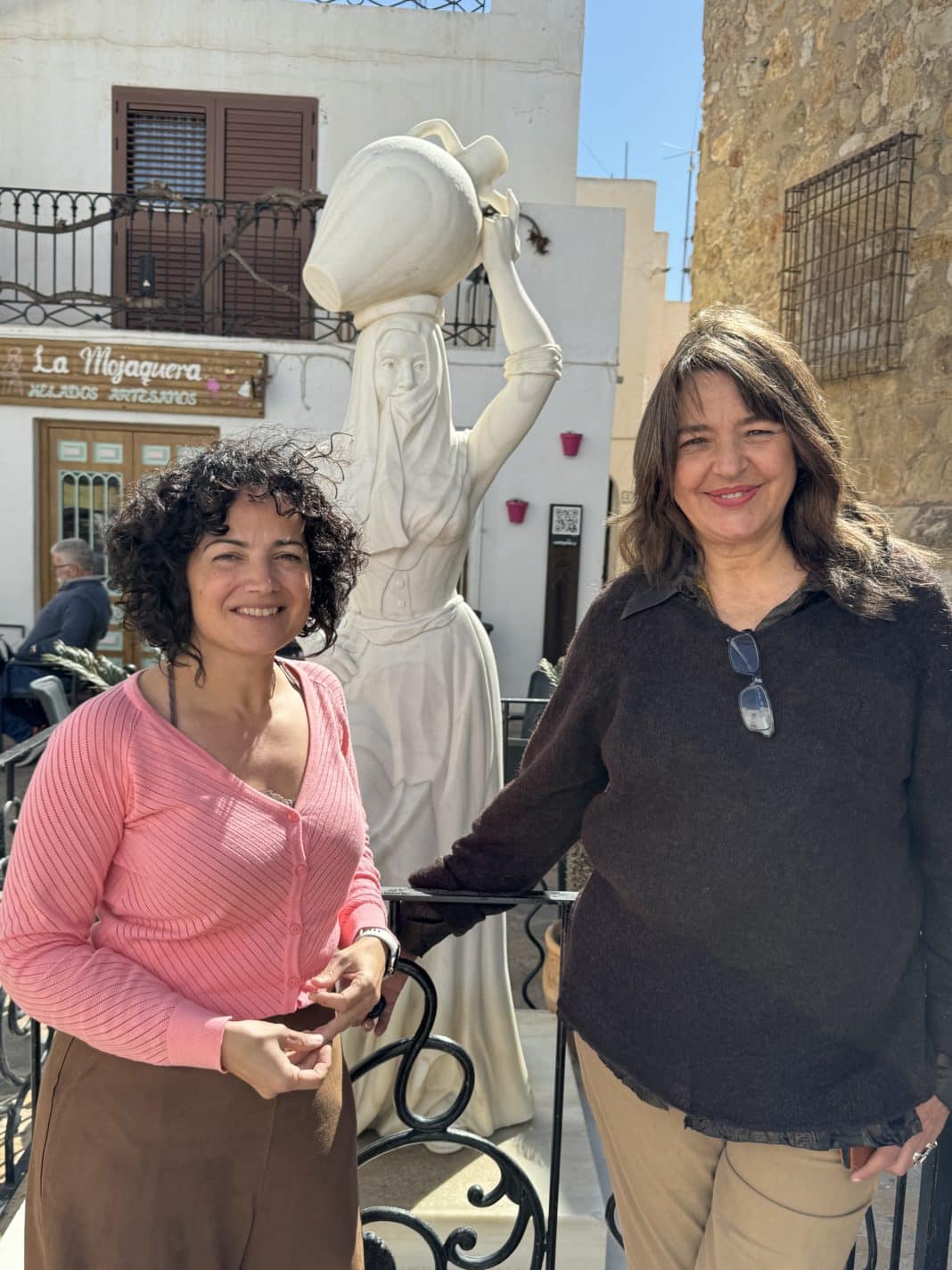Thirty-five years after the most famous, best-known and photographed sculpture of the “Mojaquera” was officially inaugurated in the Plaza de la Iglesia, its creator, the sculptor Mariángeles Guil, has visited her work and recalled the time when the adventure began of a work of art that is the emblem of an entire village.
Mariángeles Guil, born in Almería and living in Granada at that time, responded to the call, the second, made by Mojácar Council, to create a sculpture that would symbolise the women of Mojácar, their contribution and dedication to the tough life of those years and their efforts to maintain family life, including carrying heavy pitchers of water from the fountain to their homes.
At only 29 years old, the young sculptor won the competition with a beautiful proposal, through a drawing of what she thought would be a good representation of the Mojaquera.
For nearly a year she worked in Macael, as she was clear that it had to be made of white marble, giving shape and life to her sculpture: one metre seventy and 1,000 kilos that emerged from the magic of her hands after eagerly searching for the suitable marble block and with her expert eyes examining every vein and every peculiarity of the stone. The marble belonged to the Cuellar marble quarry.
She didn’t know the marble region nor had she previously worked with this material and it was with the Mojaquera that she discovered it. From her time in Macael while creating the Mojaquera, she has the lovely anecdote of ending up as a technical drawing teacher at the institute for a few months, being able to come into contact with the marble workers in the area which opened many doors and many new experiences.
It was a solemn inauguration that took place on the occasion of the Mojácar patron saint festivities in 1989. As is the custom, with the attendance of the entire corporation and the president of the Provincial Council at that time, as well as many of the locality’s residents.
Rocío mass, poetry readings and more than 3,000 people, according to reports, who went to Plaza Nueva for a concert by the well-known singer Amaya from the group Mocedades who, from what was said, spent many summers in her youth in Mojácar and was persuaded to sing by a friend in the area.
At the same time as the inauguration of the Mojaquera, the sculptor also held an exhibition in the Castle which, according to Mariángeles Guil, was very successful and she sold many sculptures.
It appears that not everyone agreed with the location, but according to the competition rules the location was the current one and the Mojaquera was installed in the Plaza de la Iglesia and remains there.
The artist says that for her, the standout feature of the sculpture is the position of the pitcher and its orientation, with the veining that enhances its volume and the delicacy of the hand that holds it.
The sculpture of the Mojaquera has over time become loved by all residents and today it is much more than a work that represents the woman of Mojácar.
Mariángeles Guil also remembers those times and Mojácar with great affection. Coming from Mexico, despite her youth, she already had great training and experience. Her works are all over the world and she has rubbed shoulders with the great artists of the time.
She is now permanently settled in Guadix, where she had already done important works such as the sculptures on the façade of Guadix Cathedral and she met Visconti.
Almerían by birth, she began as a model for Francisco López Burgos, National Sculpture Prize winner, and then managed to find a place for herself in this workshop. At the age of 12 she entered the Granada School of Art and later studied Fine Arts in Seville. She completed a master’s degree in monumental and urban sculpture in 1984 at the Autonomous University of Mexico where she worked with Mathías Goeritz. Her works and her work have taken her halfway around the world: France, Italy, Israel, Mexico.
Guil is highly valued as an Andalucian avant-garde artist of the 20th century, author of important works of public art of her generation.







